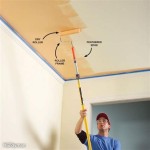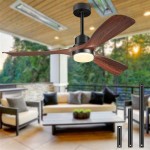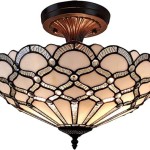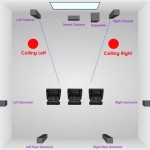How To Install Wood Beams In Ceiling
Installing wood beams in a ceiling can dramatically enhance a room's aesthetic, adding character, warmth, and a touch of rustic elegance. Whether you are aiming for a traditional, modern, or farmhouse look, exposed beams can serve as a striking focal point. This article details the process of installing wood beams, covering essential preparation steps, securing the beams safely, and addressing common considerations to ensure a successful and visually appealing outcome. The process requires careful planning, precise execution, and a thorough understanding of structural support.
Before undertaking the installation, it is crucial to determine whether the existing ceiling structure can support the weight of the beams. The structural integrity of the ceiling joists and their ability to bear the additional load must be assessed. Consulting with a structural engineer is highly recommended, especially if you are unsure about the load-bearing capacity of your ceiling. Attempting to install heavy beams without proper support can lead to serious structural problems and potential safety hazards.
There are two primary categories of wood beams used for decorative purposes: solid wood beams and faux wood beams. Solid wood beams offer authentic character and natural appeal, but they are considerably heavier and require robust support. Faux wood beams, typically made from high-density polyurethane or other lightweight materials, provide a realistic appearance at a fraction of the weight, making them easier to install and requiring less reinforcement. The choice between solid and faux beams depends on budget, aesthetic preferences, structural capabilities, and ease of installation.
1. Planning and Preparation
The initial phase of installing wood beams centers on meticulous planning and thorough preparation. This stage is paramount to ensure a safe, aesthetically pleasing, and structurally sound installation. Skipping or underestimating the importance of these preparatory steps can lead to complications and ultimately compromise the project's success.
A. Determining Beam Placement and Spacing: Begin by carefully determining the desired placement and spacing of the beams. Consider the room's dimensions, ceiling height, and overall design aesthetic. Uniform spacing often creates a balanced and harmonious look, while irregular spacing can achieve a more natural or rustic feel. Use a tape measure and level to mark the intended location of each beam on the ceiling. This step allows you to visualize the final result and make adjustments as needed before commencing installation.
B. Measuring and Cutting the Beams: Once the placement is finalized, accurately measure the distance between the walls at each beam location. Cut the beams to the appropriate length using a circular saw or miter saw. Exercise precision when cutting the beams to ensure they fit snugly between the walls without gaps. For solid wood beams, it may be necessary to account for slight variations in the wall dimensions along the beam's length. Test-fit each beam before proceeding to the next step to confirm the accuracy of the measurements and cuts.
C. Preparing the Ceiling Surface: Thoroughly prepare the ceiling surface by cleaning it of dust, dirt, and any loose debris. Identify the location of ceiling joists using a stud finder. The joists are the structural members that provide support for the ceiling. Marking the joist locations is crucial because the beams will need to be securely attached to them. If the ceiling is textured, consider smoothing the surface to provide a cleaner and more uniform backdrop for the beams. This is particularly important if you plan on using faux beams, as they may not conceal imperfections as effectively as solid wood beams.
D. Gathering Materials and Tools: Assemble all the necessary materials and tools before starting the installation. This includes the wood beams (solid or faux), wood screws, construction adhesive (if using faux beams), a stud finder, a level, a drill, a saw, safety glasses, and a ladder. Having all the tools readily available will streamline the installation process and prevent unnecessary interruptions.
2. Installing Support Structures
Adequate support is paramount for safely and securely installing wood beams, especially when dealing with solid wood beams due to their considerable weight. The chosen support method must effectively distribute the beam's load to the ceiling joists and ensure long-term structural integrity. Even with faux beams, a degree of support is usually necessary to prevent sagging and maintain a professional appearance.
A. Installing Mounting Blocks: Mounting blocks, typically made from solid wood, are strategically placed between the ceiling joists to provide a secure anchor point for the beams. These blocks are attached to the joists using wood screws. The size and number of mounting blocks will depend on the weight and length of the beams. Position the mounting blocks according to the markings made during the planning phase, ensuring they align perfectly with the intended beam placement. Mounting blocks provide a stable and level surface for attaching the beams.
B. Using Ledger Boards: Ledger boards, horizontal pieces of wood attached to the ceiling joists, can also be used to provide support for the beams. The ledger boards run along the length of the joists and provide a larger surface area for distributing the beam's weight. Attach the ledger boards to the joists using wood screws, ensuring they are level and securely fastened. Ledger boards are particularly useful when installing longer or heavier beams, as they offer enhanced support compared to individual mounting blocks.
C. Alternative Support Methods: Depending on the specific project requirements, alternative support methods may be considered. These can include metal brackets or specialized beam hangers designed to securely suspend the beams from the ceiling joists. Metal brackets offer exceptional strength and durability, making them suitable for supporting heavy solid wood beams. Beam hangers provide a concealed means of attachment, allowing for a cleaner and more streamlined appearance. When selecting alternative support methods, ensure they are rated to handle the weight of the beams and comply with local building codes.
3. Securing the Beams
Once the support structure is in place, the final step involves securely attaching the wood beams to the ceiling. This process requires careful alignment, precise fastening, and attention to detail to ensure a professional and aesthetically pleasing result. The method of attachment will vary depending on whether solid or faux beams are used.
A. Attaching Solid Wood Beams: Solid wood beams are typically attached to the mounting blocks or ledger boards using wood screws. Position the beam on the support structure, ensuring it is level and aligned with the markings on the ceiling. Predrill pilot holes through the beam and into the mounting blocks or ledger boards to prevent the wood from splitting. Insert wood screws through the predrilled holes and securely tighten them. Use a sufficient number of screws to ensure the beam is firmly attached and will not shift or sag over time. Countersinking the screws will allow for a flush finish, which can be concealed with wood filler if desired.
B. Attaching Faux Wood Beams: Faux wood beams are typically attached to the ceiling using a combination of construction adhesive and wood screws. Apply a generous bead of construction adhesive to the mounting blocks or ledger boards. Position the faux beam on the adhesive, ensuring it is level and aligned with the markings on the ceiling. Use wood screws to further secure the beam to the support structure. The adhesive provides immediate adhesion, while the screws provide long-term support and prevent the beam from detaching. Conceal the screw heads with paintable caulk or wood filler to create a seamless finish.
C. Addressing Seams and Gaps: After the beams are securely attached, inspect them for seams or gaps. These can be caused by uneven cuts or slight variations in the wall dimensions. Fill any seams or gaps with paintable caulk or wood filler. Smooth the caulk or filler with a putty knife to create a seamless transition. Once the caulk or filler has dried, sand it lightly to blend it with the surrounding surface. Paint or stain the filled areas to match the color of the beams, ensuring a uniform and professional appearance.
D. Finishing Touches: To complete the installation, consider adding finishing touches such as decorative caps or end pieces to the beams. These elements can enhance the overall aesthetic and provide a more refined look. Install the caps or end pieces using construction adhesive and small nails or screws. Consider also adding lighting fixtures or decorative elements to the beams to further enhance their visual appeal. Ensure that any electrical work is performed by a qualified electrician and complies with local building codes.
Throughout the entire installation process, prioritize safety. Wear safety glasses to protect your eyes from debris, and use a ladder that is stable and appropriately sized for the task. If working with heavy solid wood beams, enlist the assistance of another person to help lift and position them safely. By following these detailed steps and prioritizing safety, you can successfully install wood beams in your ceiling and transform the aesthetic of your living space.

Beam Installation Techniques Mounting Blocks Plank Barron Designs

Decorative Faux Wood Ceiling Beams How To Install Diy

Diy Faux Ceiling Beams With Love Mercedes

How To Install Faux Wood Beams Fast And Easy

How To Cut Down And Install Reclaimed Beams Pine Prospect Home

How To Diy A Faux Wooden Ceiling Beam Bower Power

Beam Installation Techniques Mounting Blocks Plank Barron Designs

How To Install Faux Beams Tutorial Diy

How To Install Faux Wood Beams In Your Home Chris Loves Julia

How To Install Faux Wood Beams Fast And Easy Youtube







